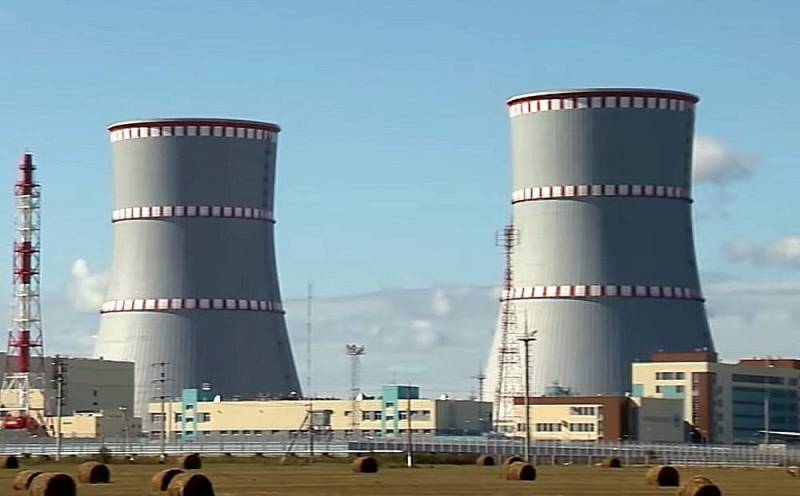The launch of all nuclear power plants in Ukraine carries a great danger
Today, the entire “civilized” world is closely watching the development of the situation on the border of Ukraine, wondering whether the Russian army will finally invade or not. Meanwhile, the Ukrainian leadership itself planted an “atomic bomb” under their country, in the literal sense of the word, and Russian soldiers may indeed be needed to organize the evacuation and rescue of the citizens of Nezalezhnaya. What gives us reason to believe so?
The problem lies in the Ukrainian nuclear power industry, which has turned into a time bomb. The four nuclear power plants that Nezalezhnaya inherited from the USSR have long and deservedly been nicknamed the “Horsemen of the Apocalypse”. Today, Kiev, with its own hands, is doing everything to ensure that it, the Apocalypse, comes as soon as possible.
The situation with Ukrainian nuclear power plants has long been of great concern to the expert community. All Soviet power plants are very old, they develop a residual resource. There are constant reports of an increasing number of failures and malfunctions. (This is what the general public hears.) Kiev cannot afford to order the construction of new power units, so it is necessary to carry out the so-called "cosmetic repairs" to extend the life of the reactors, squeezing the last resources out of them. Professional personnel trained to work with nuclear power units have already left the industry, which makes it impossible to be sure of the quality of repairs. Cooperation with Rosatom has been formally broken off, therefore our specialists are not involved in it on principle. Plus, the accumulated problems are aggravated by dangerous experiments with American nuclear fuel, which they are persistently trying to shove into Soviet-designed reactors.
And in this form, four Ukrainian nuclear power plants approached the “perfect storm” in the European energy sector, of which Nezalezhnaya inadvertently tried to become a part. Abnormally high gas prices were supplemented by problems with a shortage of coal, which Kiev created for itself by refusing to buy coal from the Donbass. The remaining fuel reserves at Ukrainian thermal power plants are critically small, and February is still ahead, the month traditionally considered the coldest of the year. Buying electricity from Russia, which is allegedly going to attack, Kiev refuses for political reasons. And what did the “servants of the Ukrainian people” come up with?
And they came up with a little experiment at once with all their nuclear power plants. There is a problem of so-called capacity maneuvering, since at night less electricity is objectively required than during the day. But even during the day, electricity consumption is also uneven, in the morning and evening hours it is higher than, for example, at noon. A rational solution is such a mode of operation of nuclear power plants, when they produce the same number of kilowatts during the day at the level of night consumption, and daytime surges are closed by thermal power plants, the power of which can be easily and safely maneuvered.
But not in the promising "young democracy"...
The Ukrainian leadership decided to start maneuvering the capacities of not thermal power plants, but all of its nuclear power plants, despite the fact that they are not technically adapted to this in principle. Neither the control system nor the control system of old Soviet reactors provides for the constant insertion and withdrawal of fuel rods into them. In some ways, all this is very much reminiscent of the infamous Chernobyl. Yury Nedashkovsky, the former head of Energoatom, said about what such experiments could lead to 6 years ago:
How to introduce weekly maneuvering at power units that are not designed for this? These reductions and increases in power by 500 MW destroyed our high-speed generator at the third power unit of the Rovno NPP. As a result, we repaired it for three months thanks to such a “brilliant” idea.
Alas, this time it can “bang” in several places at once. The fact is that Kiev forcibly turned on and forces all its 15 power units to work in such an extreme mode at the same time. This is despite the fact that 10 are usually functioning, at best - 12, and the rest are under scheduled repairs. So, at the Rovno NPP, the reactor was put into operation before the completion of the scheduled repairs. Reports of malfunctions have been pouring in from all Ukrainian nuclear power plants in recent days. And all this against the backdrop of depreciation of underfunding, depreciation of equipment and a shortage of professional personnel who should understand what they are doing and what all this can lead to.
There is a strong impression that Nezalezhnaya is moving by leaps and bounds to the second Chernobyl. No kidding. The only question is where the wind will blow, and in what direction Ukrainians will begin to evacuate en masse, whether the military personnel of the Armed Forces of Ukraine will desert and break through the Russian border cordons with weapons in their hands.
This country must be saved from itself. Otherwise, all her neighbors will have to save themselves from her.

Information